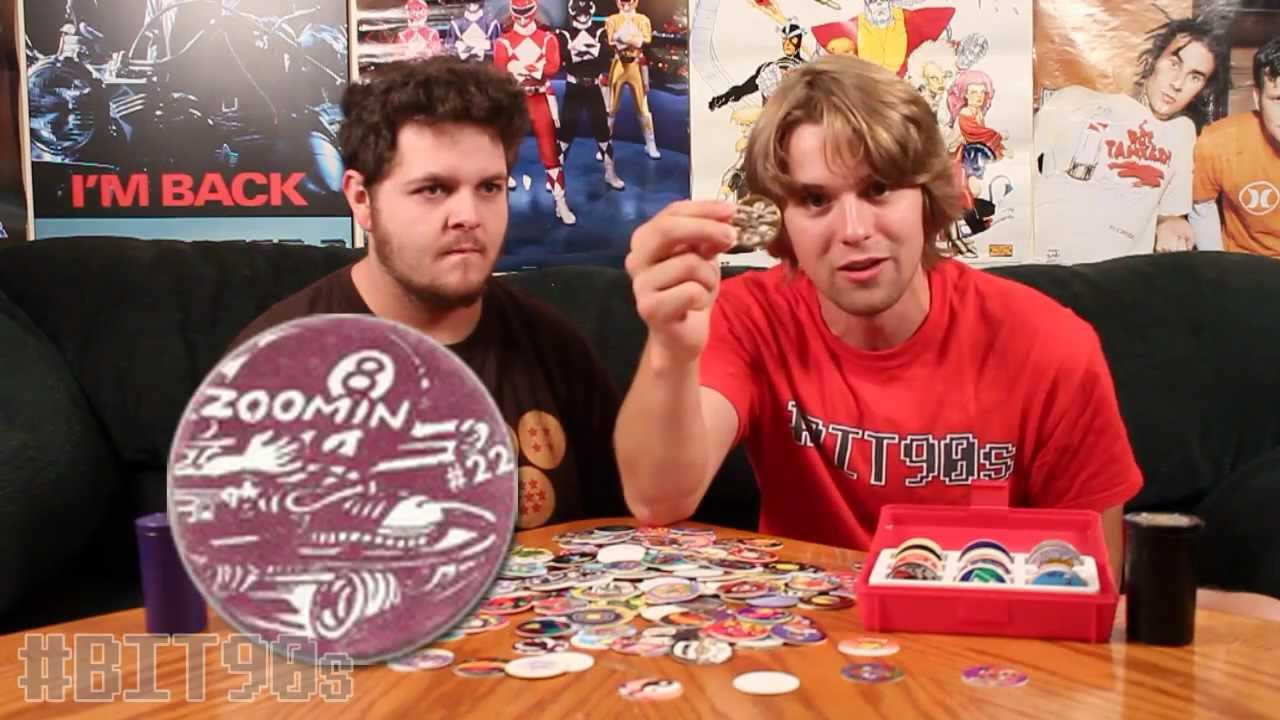Pogs 90s

In the vast panorama of 90s nostalgia, few artifacts evoke the same fervor and fond memories as Pogs. For those who grew up in the era, these small, circular cardboard discs were more than just toys – they were tokens of childhood joy, traded on playgrounds, collected in binders, and fiercely battled in competitive games. The story of Pogs is not just a tale of a passing fad, but a cultural phenomenon that left an indelible mark on the collective memory of a generation.
Table of Contents
ToggleOrigins and Evolution
Pogs, originally known as “Milk Caps,” have a surprisingly humble origin. The game can be traced back to the 1920s in Hawaii, where children would play with the caps of milk bottles, known as “Pogs,” after a popular brand at the time. However, it wasn’t until the early 1990s that Pogs exploded into popular culture, thanks to a schoolteacher named Blossom Galbiso.
Galbiso introduced the game to her students as a teaching tool, using the caps of passion fruit juice bottles. The game quickly spread among the students and eventually caught the attention of a businessman named Alan Rypinski. Sensing an opportunity, Rypinski began manufacturing Pogs on a larger scale and launched the World POG Federation in 1993, propelling the game to nationwide prominence in the United States.
The Pog Craze
The allure of Pogs lay in their simplicity and versatility. Each Pog featured colorful designs, often depicting popular characters, sports teams, or iconic images. Players would stack an equal number of Pogs face-down and take turns throwing a heavier disc, known as a “slammer,” onto the stack. Any Pogs that flipped over were claimed by the thrower, and the game continued until all the Pogs had been flipped.
What started as a simple playground pastime quickly escalated into a full-blown craze. Pogs became ubiquitous, appearing in schoolyards, toy stores, and even on television. Major brands jumped on the bandwagon, producing licensed Pogs featuring everything from cartoons to professional athletes. McDonald’s included Pogs in their Happy Meals, further fueling the frenzy.
Collecting and Trading
Beyond the gameplay itself, collecting and trading Pogs became a popular hobby for children and adults alike. Pogs were typically sold in packs or tubes, with each containing a random assortment of designs. This element of chance added an extra layer of excitement to collecting, as players eagerly sought out rare or coveted Pogs to complete their collections.
Binders adorned with plastic sleeves became the de facto storage solution for Pog enthusiasts, meticulously organizing their prized discs for display. Trading sessions became common occurrences, with players bartering to acquire their favorite designs or complete sets. Rare Pogs could fetch significant sums on the secondary market, adding a speculative element to the hobby.
Controversy and Backlash
As with any cultural phenomenon, Pogs were not without their controversies. Concerns arose over the game’s potential to promote gambling among children, particularly due to the element of chance in collecting and trading. Some schools even banned Pogs altogether, citing disruptions to the learning environment and conflicts among students.
Additionally, Pogs faced criticism for their environmental impact, as millions of cardboard discs were produced and discarded during the height of the craze. While efforts were made to promote recycling and sustainability, the disposable nature of Pogs ultimately contributed to their decline in popularity.
Legacy and Revival
Despite the eventual waning of the Pog craze by the late 1990s, the legacy of these iconic discs endures to this day. For many, Pogs represent a nostalgic reminder of simpler times, evoking memories of carefree childhoods spent trading and playing with friends. The resurgence of interest in retro gaming and pop culture has sparked a renewed appreciation for Pogs among collectors and enthusiasts.
In recent years, there have been attempts to revive the Pog craze, with nostalgic adults introducing the game to a new generation of players. Social media platforms provide a digital marketplace for buying, selling, and trading Pogs, connecting fans from around the world. Additionally, events and conventions dedicated to retro gaming often feature Pog tournaments and exhibitions, keeping the spirit of the game alive for future generations.
In an era defined by rapid technological advancement and digital entertainment, the enduring appeal of Pogs serves as a reminder of the simple pleasures of childhood. Whether viewed as a relic of the past or a timeless classic, Pogs continue to hold a special place in the hearts of those who experienced the 90s craze firsthand. As long as there are memories to be cherished and stories to be told, the legacy of Pogs will remain etched in the annals of pop culture history.





